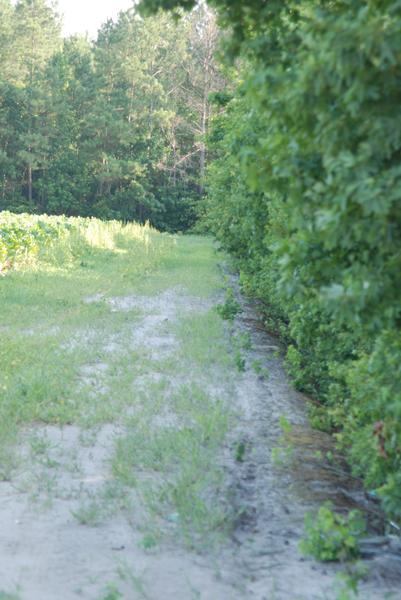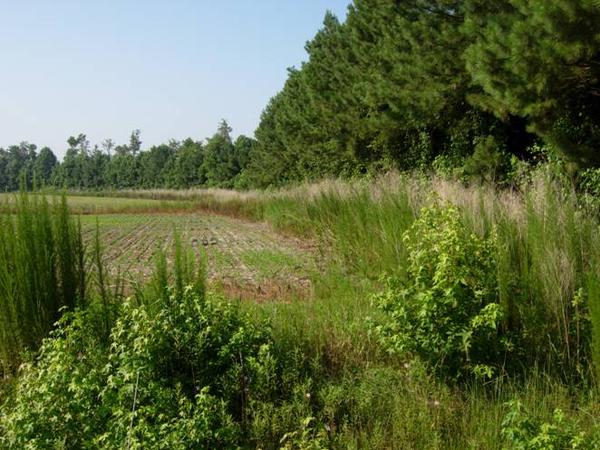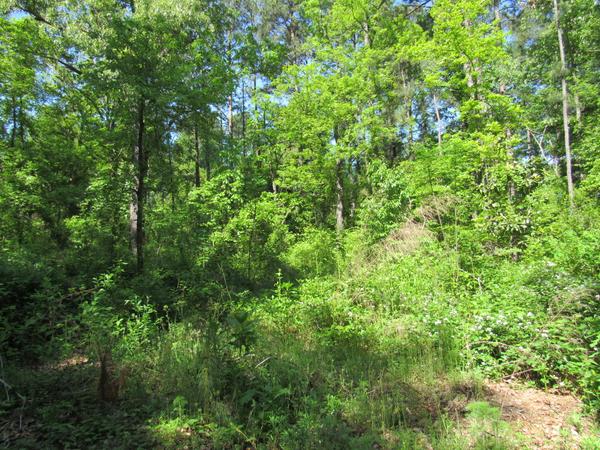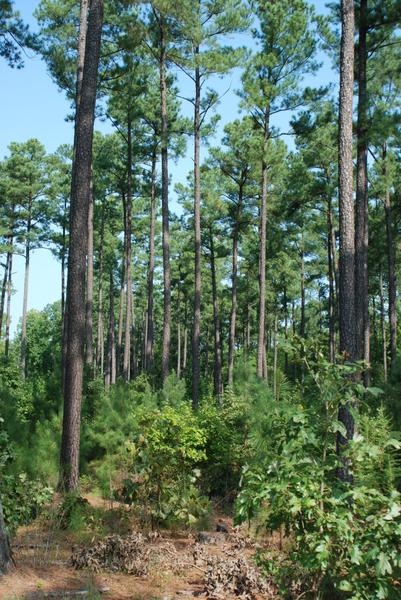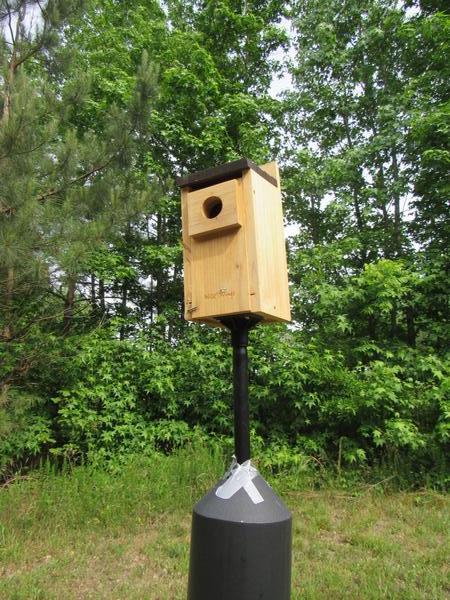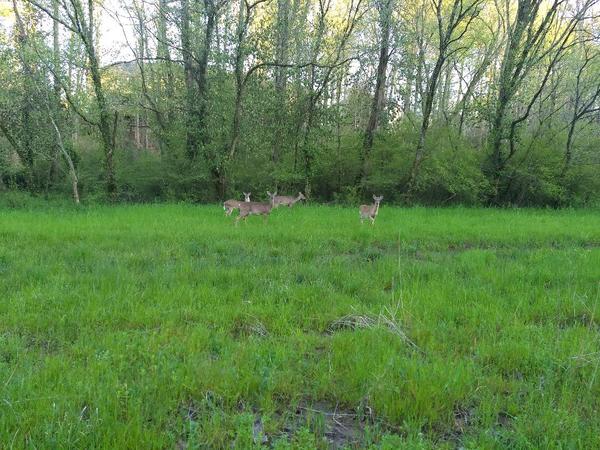Managing Forest Edges for Wildlife
Edge is the boundary between two adjacent land cover types, such as a forest and a meadow or a forest and a parking lot. Edges also occur between different aged patches of the same forest type. Edges occur naturally where there are abrupt changes in soil characteristics or where fire or severe wind disturb forest, but most edges are created by human activities, often via urban development, agricultural activity, or timber harvest.
The Role of Edges
Edges are unique because they combine some of the characteristics of two or more adjacent vegetation types. Edges are inhabited by the animals and plants of the two adjacent vegetation communities, plus species that require both vegetation communities (e.g., a deer beds in young, regenerating pine forest during the day and eats acorns in the adjacent mature hardwood forest at night). Therefore, edges often are characterized by more diverse and abundant wildlife communities than the interior of either adjacent land cover. This increased diversity is known as the “edge effect.” In fact, predators may concentrate their hunting activities near edges because of the abundance and variety of prey animals present.
Edges also tend to be important places for wildlife because many other portions of the landscape offer poor food and cover resources. Most forests in North Carolina are not managed and therefore have closed canopies that intercept sunlight and shade out understory plants. Additionally, these forests generally are not burned so they have thick layers of leaf litter that suppress germination by forbs and grasses. Similarly, agricultural fields are managed intensively to limit the presence of non-crop plants that offer food and cover to northern bobwhite quail and other wildlife in farm landscapes. Pastures are planted in perennial cool-season grasses (e.g., tall fescue) and warm-season grasses (e.g., bermudagrass) that form a mat at ground level that restricts animal movement and suppresses growth of forbs and grasses that provide food and cover for early succession wildlife.
Hence, the edges between these adjacent areas that offer relatively poor-quality habitat often are targeted for habitat management. Fallow field borders may be created and maintained at edges between cropland and forest because crops grow poorly next to tree cover. Vertical structure of vegetation (the layering of the forest) typically is more complex along forest edges than in interiors because of the increased sunlight penetration along edges; forest edges are choked with saplings and vines for the first 10 or 15 yards and then the understory becomes increasingly sparse as shading under the dense forest canopy increases away from the adjacent openings.
Ideally, the entire landscape should be managed to improve habitat quality for focal species such as cottontail rabbits, northern bobwhite quail, or white-tailed deer. However, competing interests (e.g., crop or timber production) may limit opportunities, making management along edges the best option. Along these forest edges, vegetation should be managed to increase vertical structure and to promote important food plants as in those that produce soft mast (Table 1).
|
Trees |
|
|
Plum |
Mulberry |
|
Persimmon |
Dogwood |
|
Serviceberry |
American holly |
|
Blackgum |
Black Cherry |
|
Shrubs |
|
|
Spicebush |
Wax myrtle |
|
Blackberry |
Gallberry |
|
Blueberry |
Sumac |
|
Yaupon |
Huckleberry |
|
Elderberry |
Beautyberry |
|
Vines |
|
|
Poison ivy |
Wild grape |
|
Virginia creeper |
Greenbrier |
Tips for Managing Forest Edges
- When conducting timber harvest, retain uncut forest along streams for water protection and as habitat for wildlife associated with mature forest.
- Allow fencerows, the margins of logging roads, and borders between cropland and forest to grow up in fallow vegetation.
- Maintain fallow vegetation using herbicides to remove woody plants or by disking or burning the area every 2 to 3 years. Mowing in late winter also can be used to maintain borders if disking or burning are not an option (Figure 1).
- Ideally, an entire forest stand should be thinned and burned so the entire area contains complex vertical structure important to a variety of wildlife. However, if thinning heavily is not an option, consider limiting heavy thins to the boundaries of forest stands.
- Maintain firebreaks and roads within and along the edge of plantations in early succession by disking in late winter or by planting as food plots.
- Time harvests to maximize the age difference between adjacent forest stands. The greater the difference in age between adjacent stands (edge contrast), the greater the diversity and abundance of wildlife likely to be present in that local area.
- Thin or remove trees along logging and access roads to “daylight” those areas.
- Conduct hinge-cutting to create living brush piles along forest edges: 1) choose saplings that are 6 to 8 feet tall; sweetgum and red maple are excellent options; 2) in the spring of the year, make a cut in the trunk with a hand or chainsaw 3-4 feet above the ground adjacent the intended location of the pile; 3) cut deep enough so that you can push the top over, leaving a connecting strip of bark and wood (hinge) to nourish the tree. Use a stake or stone to tie the top of the tree to the ground.
- Construct brush piles, using tree tops or old Christmas trees, every 200 to 300 feet along woodland edges.
- Control invasive species such as kudzu and Chinese wisteria, which are frequently found along edges and will outcompete native plant species.
Working With Wildlife
North Carolina State University Extension - Forestry
Working With Wildlife Series
Herbaceous Plants for Wildlife
Publication date: July 1, 2019
Revised: July 1, 2019
N.C. Cooperative Extension prohibits discrimination and harassment regardless of age, color, disability, family and marital status, gender identity, national origin, political beliefs, race, religion, sex (including pregnancy), sexual orientation and veteran status.
N.C. Cooperative Extension prohibits discrimination and harassment regardless of age, color, disability, family and marital status, gender identity, national origin, political beliefs, race, religion, sex (including pregnancy), sexual orientation and veteran status.


